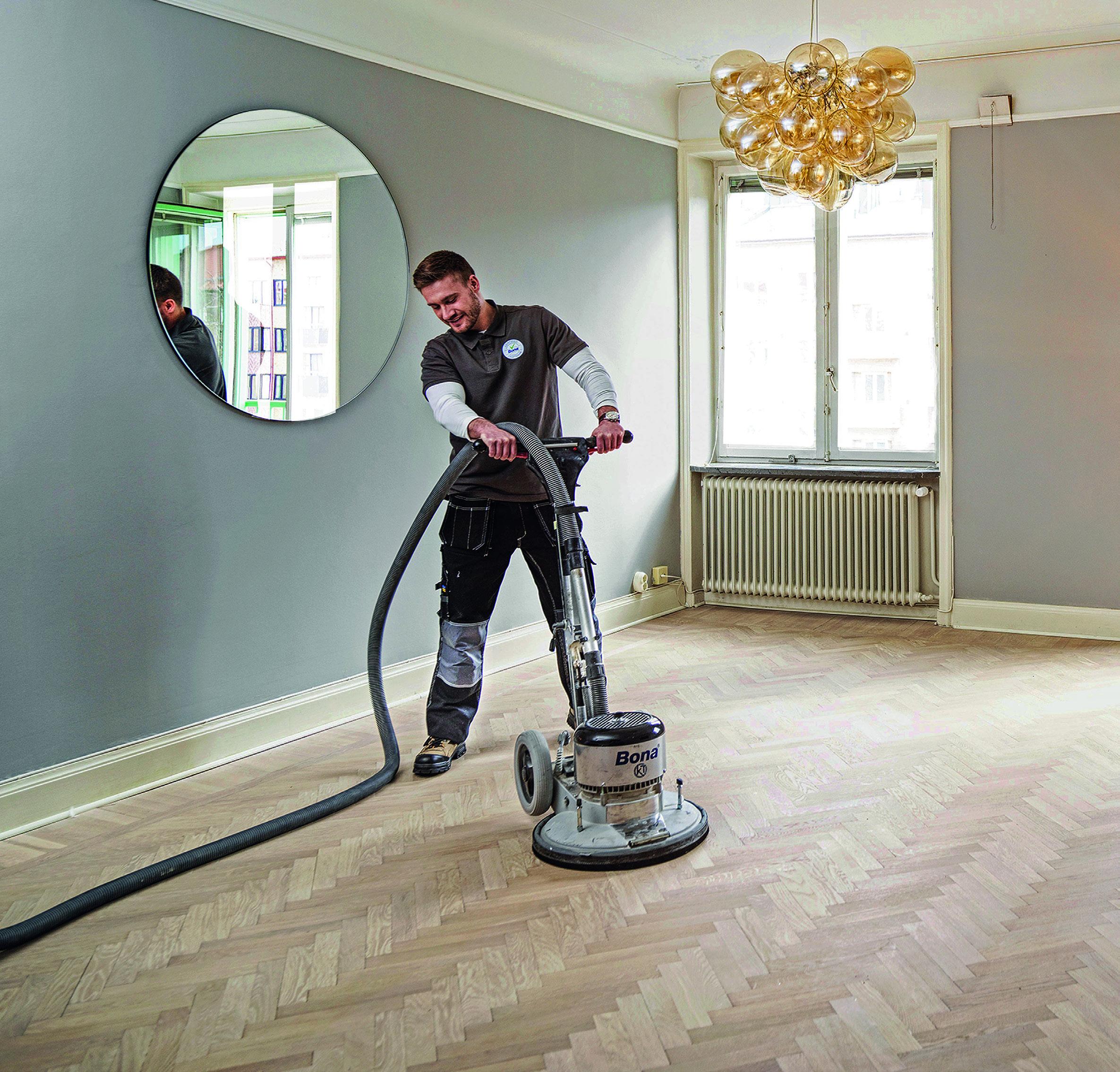The sustainability of refinished wood floors
Wood is a sustainable material and has long been valued for its appearance, providing texture, colour and lustre, together with excellent wear resistance enhanced through coating. Alec Stacey discusses new research from Sweden that suggests another benefit of wood flooring is that it can be refinished, extending the service life of a floor.

In 2019, IVL Swedish Environmental Research Institute (IVL), sought to understand the environmental impact of refinishing compared to replacing flooring materials. Founded in 1966, IVL is a Sweden-based environmental research agency that studies the holistic interaction between the environment, economy, business and society. The 12-month study it conducted looked at the impact of refinishing versus replacing hardwood flooring in commercial buildings throughout Sweden.
Every year, 25 million square metres of new flooring is installed in Sweden, some of which is for the replacement of existing flooring. This is important since building and construction accounts for one-fifth of Sweden’s climate impact and examining ways to reduce this is important. This provides the background for the research project. It is likely that what happens in Sweden is reflected in other countries of a similar size and demographic.
IVL invited Bona, headquartered in Malmö, Sweden, to participate in the 12-month study, with the caveat that all findings would be shared publicly. IVL reviewed several refinishing systems as part of the project. The study, Increasing Resource Efficiency in the Swedish Flooring Industry Through Floor Refinishing,1 began with a life cycle analysis (LCA) of the floor installation and refinishing process. The outcome of this analysis was compared to the impact of producing and installing new flooring in terms of both climate change and resource use. The study was a cradle-to-grave assessment, which means the whole life cycle for refinished and new flooring was considered. This included extraction, production, and transportation of raw materials and products, installation of flooring and refinishing, as well as end-of-life management. The study did not include the impact from floor maintenance and cleaning. IVL used the Bona System for assessing wood floor refinishing and the Bona Commercial System for PVC/ resilient floor refinishing.
Initial study results offered proof of concept, demonstrating that refinishing a floor can indeed reduce the impact of climate change and minimise resource use compared to producing and installing new flooring. >>

“Refinishing a wood floor saves 79% more carbon emissions than replacing the flooring surface. Refinishing resilient floor surfaces can offer up to 92% reduction in carbon footprint versus replacing.”Materials Timber flooring
In the second part of the study, a roadmap was developed in collaboration with stakeholders from the flooring industry including material suppliers, property owners, architects, and contractors. The roadmap outlines a strategic plan that defines outcomes and outlines important actions needed to overcome barriers to adoption of floor refinishing as a sustainable alternative to installing new floors.
In 2020, IVL released its findings. Refinishing a wood floor saves 79% more carbon emissions than replacing the flooring surface. Refinishing resilient floor surfaces can offer up to 92% reduction in carbon footprint versus replacing. Additionally, refinishing hardwood or resilient floors offers a 95% saving in energy resources, which is measured by transportation, electricity use, consumables, and materials.1

Even more value for wood flooring
The IVL report provides further evidence about the benefits of using wood floors. The demand for sustainable building and renovation is increasing in market value and homeowner interest. A report from The Insight Partners projects that the European Green Building Market is expected to reach €124.7bn by 2028. Wood is a primary material for many sustainable building projects, and the IVL data lends another perspective to wood’s longevity and environmental value.
Additionally, the demand from local and national governmental bodies and regulators for more green buildings is sharply on the rise. While the shorter-term focus is typically on energy efficiency, carbon emissions resulting from product manufacture, use and disposal (embodied carbon) is becoming increasingly important.
While other flooring made from recycled materials may claim sustainability, it often has a shorter lifespan. Once the material is worn or damaged, it is typically torn out, tossed into a landfill, and replaced with a new floor. As the IVL study proves, tearing out and replacing flooring material has a much greater impact on carbon emissions than refurbishing existing floors.
“The norm today is new and fresh. Sales of new flooring material is supported by the linear business model we have in the construction industry today and refinishing is often perceived as more difficult,” said Maria Ahlm, author of the report at the IVL Swedish Environmental Institute. “However, our analysis and final roadmap support that in addition to the decrease in carbon footprint, floor refinishing is a viable alternative to increase resource efficiency in the Swedish flooring industry.”
The report also supports new wood floor installation since well-designed, manufactured wood floors not only offer a beautiful, natural aesthetic, but a floor can be sustainably refreshed and refinished to provide an extended service life.
The timeless beauty of a wood floor is now supported by the many sustainable attributes of the material. With proper forest management, trees are planted before others are harvested, allowing wood floors to be an environmentally friendly option for generations of floor owners. Coupled with the longstanding data supporting the environmental value of wood, this new study adds another valuable perspective. Wood offers promise for a greener, more sustainable future. n
About the author
Alec Stacey Technical Manager Bona Global
References
1 Increasing resource efficiency in the Swedish flooring industry through floor refinishing, IVL Swedish Environmental Research Institute, 2022
